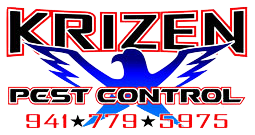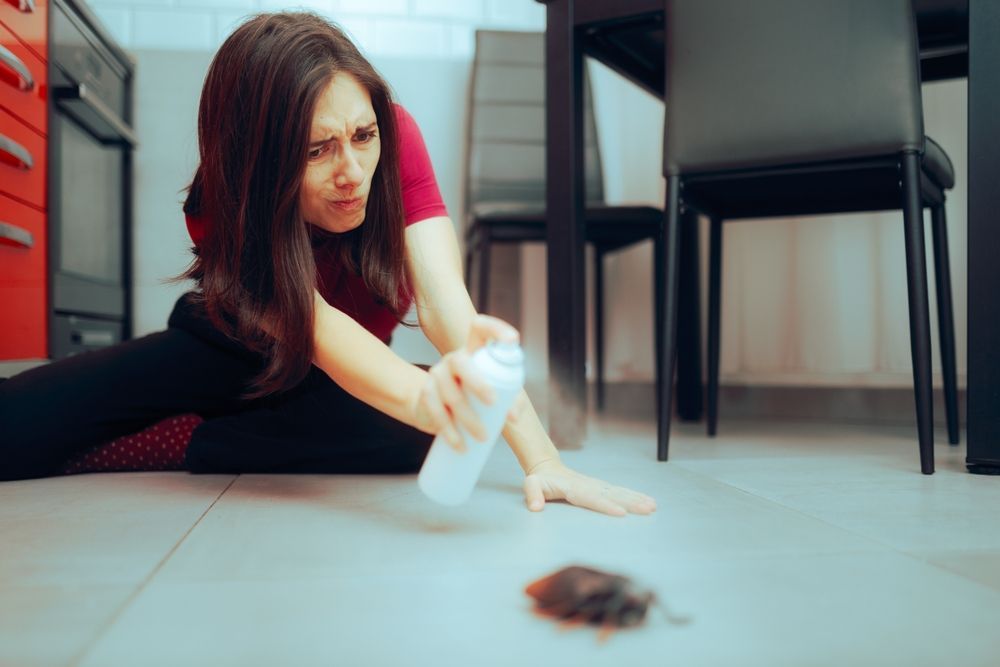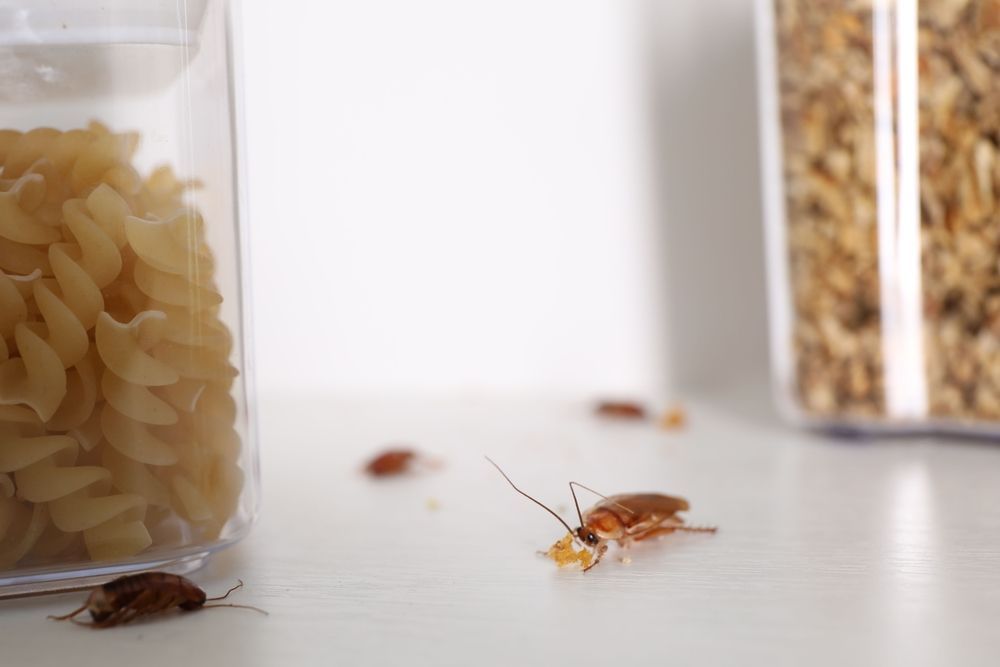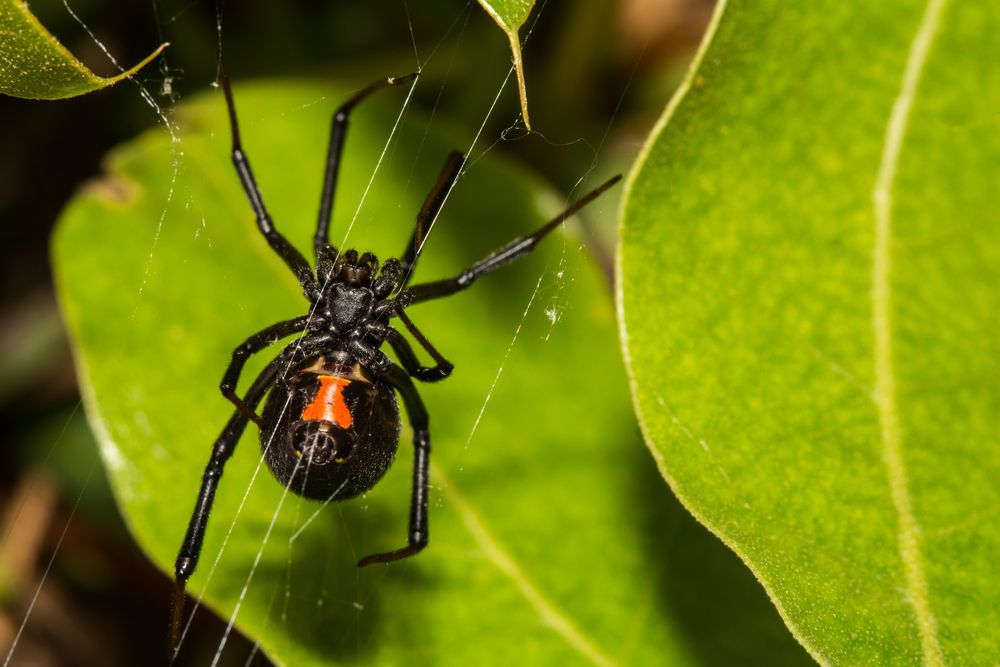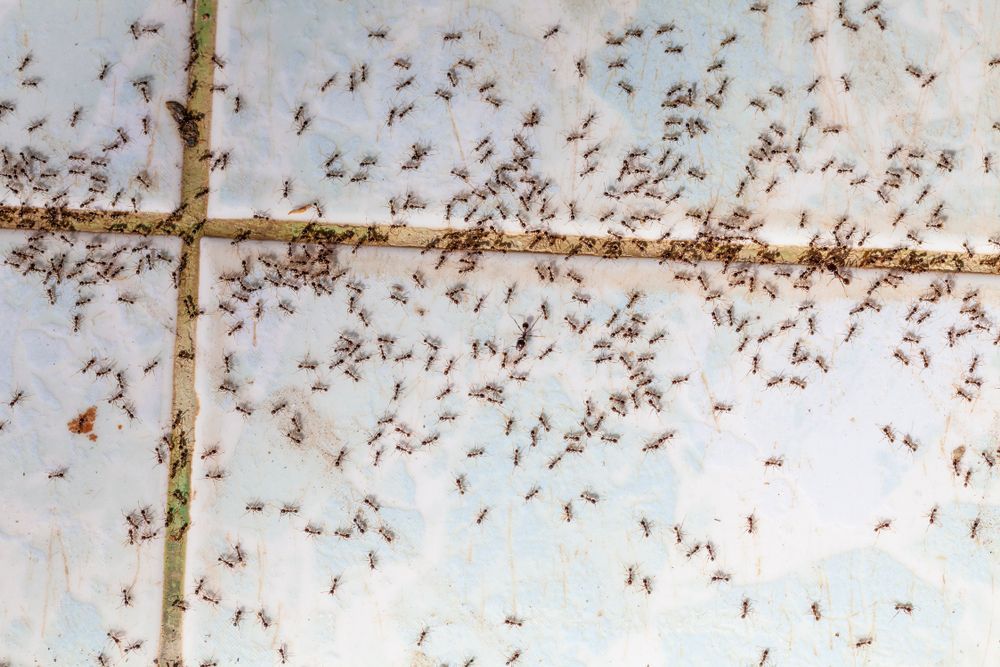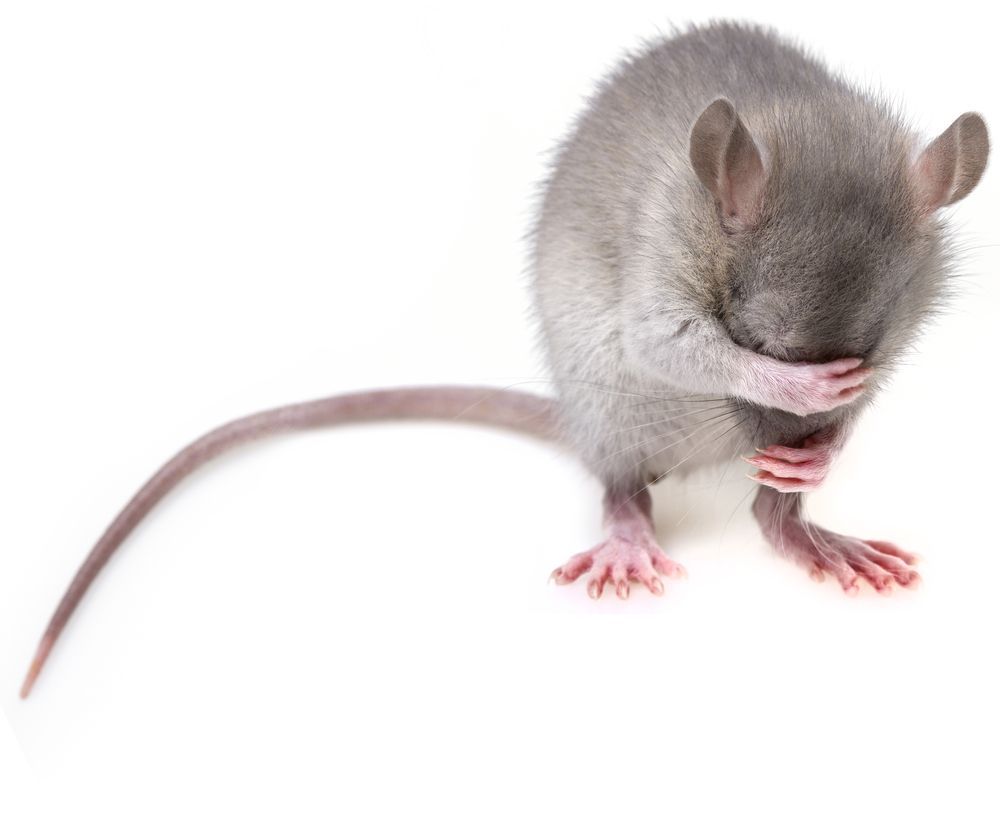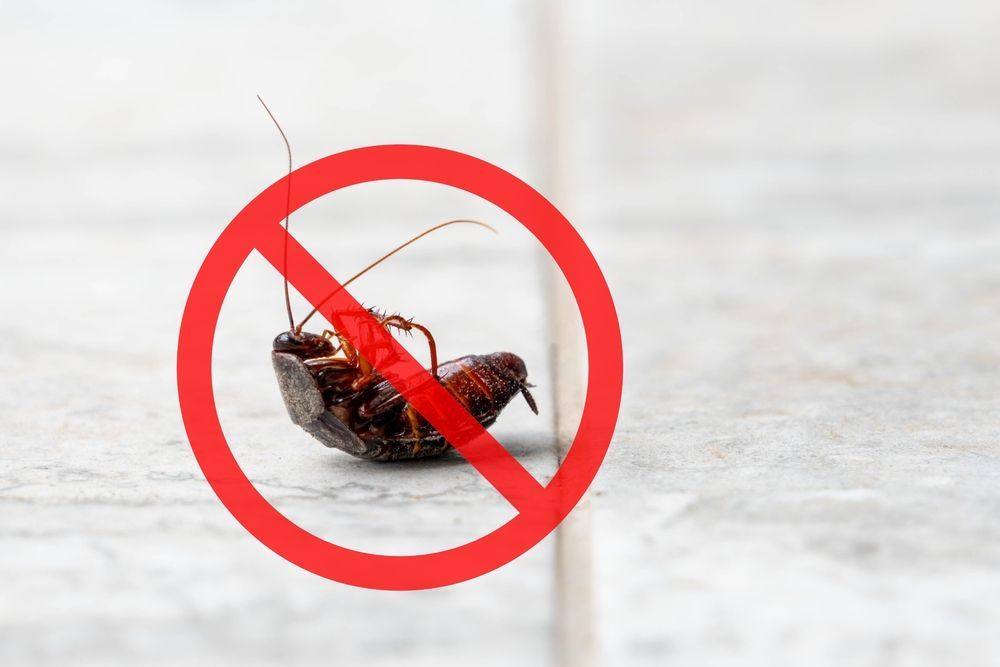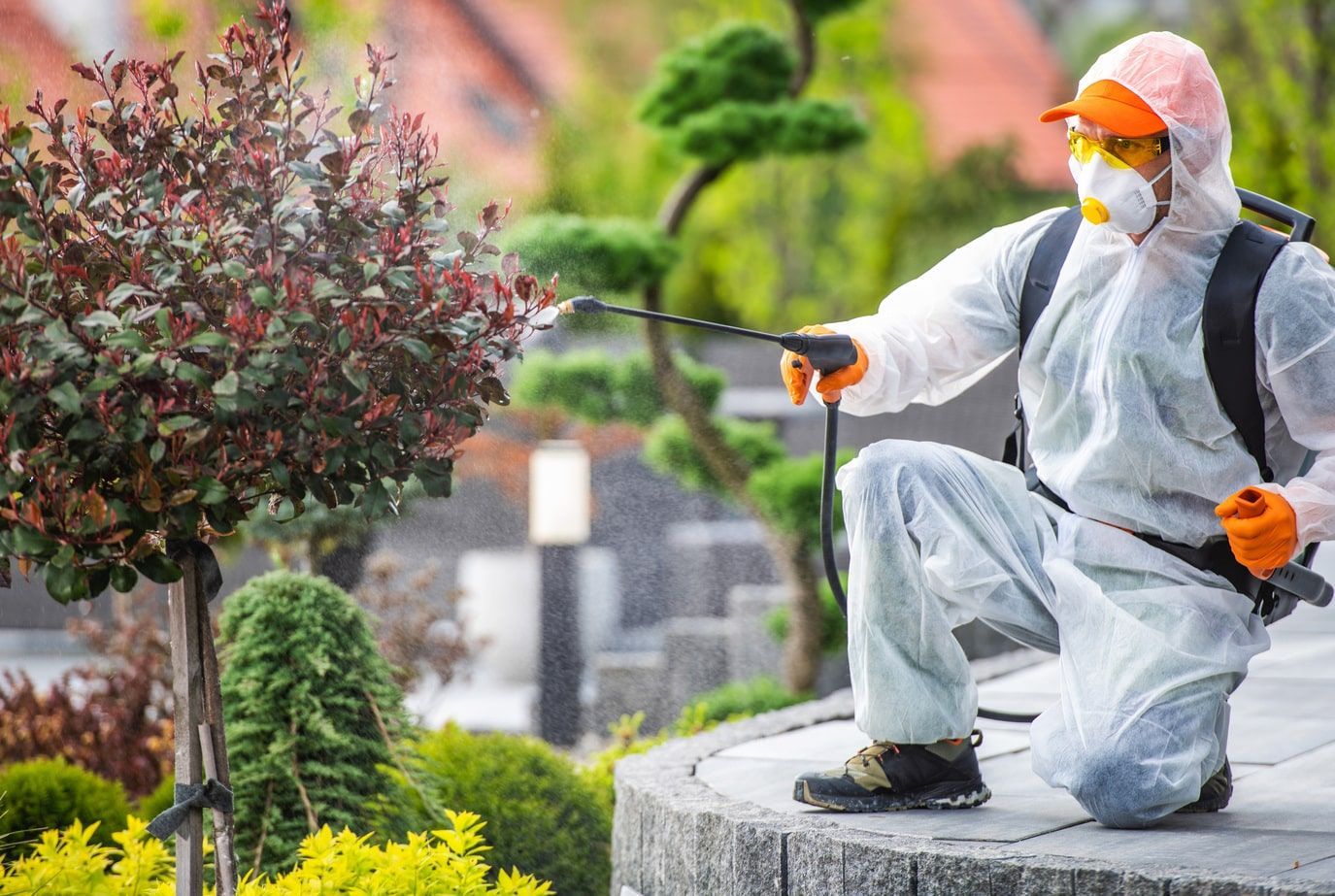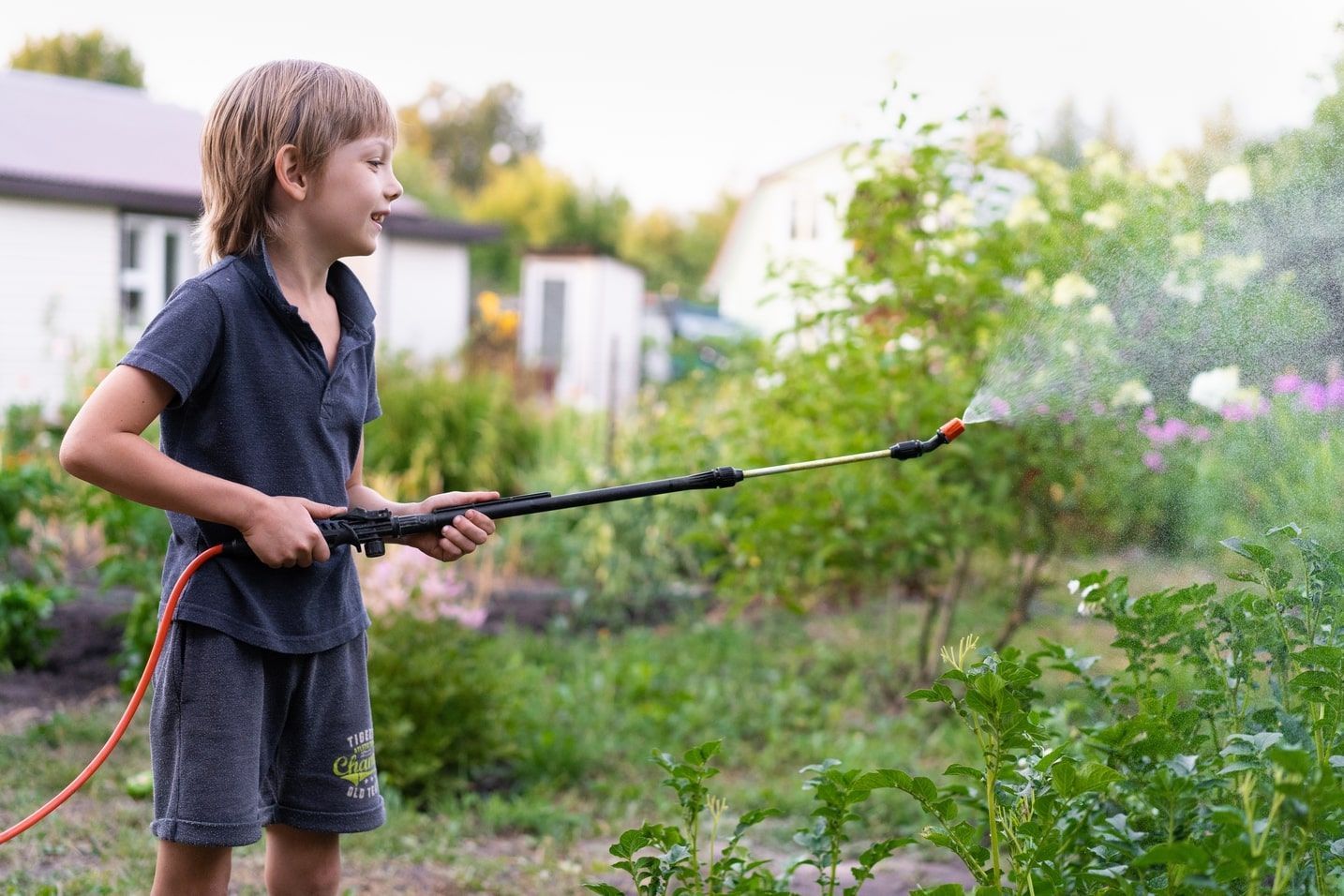The Most Effective DIY Pest Control Techniques for Your Home
Are you tired of dealing with pests in your home? Look no further! Here, we will provide you with the most effective DIY pest control techniques that you can use to keep those pesky critters at bay. From simple remedies to expert advice, we have got you covered!
When it comes to pest control, prevention is key. Start by sealing any cracks or openings in your home to prevent pests from entering. Additionally, keeping your home clean and free of food debris will deter pests from making themselves at home. But what if you already have a pest problem? Don't worry, we have solutions for that too.
One effective technique is using natural ingredients like vinegar and lemon juice to repel insects. Simply mix equal parts of these ingredients with water and spray it around areas where pests are frequent. For tougher infestations, you can try using diatomaceous earth or boric acid. These substances act as desiccants and dehydrate the pests, effectively eradicating them.
But why stop there? Prevention and elimination go hand in hand. Installing mosquito nets on windows and doors can help keep flying insects out while maintaining a clutter-free environment that will discourage rodents from nesting in your home. Remember, consistency in implementing these techniques is crucial for long-term success.
Don't let pests take over your home any longer. Take action now and reclaim your space! By following these DIY pest control techniques, you can safeguard your home from unwanted intruders and enjoy a pest-free living environment. Don't miss out on the opportunity to live comfortably – start implementing these methods today!
Do you really want to be roommates with pests? Yeah, neither do your mortgage payments.
Why DIY pest control is important for your home
DIY pest control is vital for your home to prevent the invasion of unwanted critters. It allows you to address pest issues promptly and effectively, saving you time and money. By taking matters into your own hands, you can implement targeted solutions tailored to your specific pest problem.
One of the key advantages of DIY pest control is that it puts you in control of the process. With professional services, you are reliant on the expertise and availability of technicians. However, by adopting a DIY approach, you can take immediate action whenever a pest issue arises. This enables you to actively protect your home from potential damage caused by pests.
In addition to being able to address pest problems promptly, DIY methods often prove to be more cost-effective in the long run. By investing in the necessary tools and products upfront, you can tackle multiple infestations without having to pay for recurring professional services. Moreover, with a wide range of resources available online, such as blogs and videos, you can easily educate yourself on effective techniques for eliminating specific pests.
Allow me to share a true story that highlights the effectiveness of DIY pest control. A homeowner named Sarah encountered a persistent ant problem in her kitchen. Despite seeking professional help multiple times, she found herself continually battling these pesky invaders. Frustrated with no lasting solution in sight, she decided to take matters into her own hands. Through online research and advice from fellow homeowners who had successfully dealt with similar ant issues, Sarah discovered a homemade ant bait recipe using common household items like sugar and borax. Within weeks of implementing this DIY solution, Sarah noticed a significant decrease in ant activity until they were completely eradicated from her kitchen.
By embracing DIY pest control methods tailored to your home's specific needs, you can effectively manage and eradicate unwanted pests without relying solely on professional assistance. Taking an active role in protecting your home not only saves you time and money but also provides satisfaction and peace of mind knowing that you have successfully resolved pest issues on your own terms. With the right knowledge and tools at your disposal, you can become the ultimate defender of your home against pests.
Common pests found in homes: They say cleanliness is next to godliness, but it seems like some pests didn't get the memo.
Common pests found in homes
In homes around the world, a variety of pests can become unwelcome guests. These pests can cause property damage, spread disease, and create a general nuisance. Homeowners need to be aware of the common pests that can be found in their homes and take steps to prevent and control infestations.
- Ants: These tiny insects can enter homes in search of food and shelter. They are often attracted to sweet or greasy substances and can be found in kitchens, pantries, and other areas where food is stored. It is important to keep food sealed and clean up any spills or crumbs to prevent ant infestations.
- Rodents: Mice and rats are common pests that can cause damage to property and spread disease. They can enter homes through small cracks and openings and are often found in attics, basements, and wall voids. It is important to seal any openings and eliminate potential food and water sources to prevent rodent infestations.
- Cockroaches: These resilient pests can survive in a variety of environments and are often found in kitchens and bathrooms. They can contaminate food and spread bacteria and allergens. It is important to keep these areas clean and free of moisture to prevent cockroach infestations.
In addition to these common pests, there are other potential invaders that homeowners may encounter. These include spiders, flies, mosquitoes, and termites. Each of these pests has its own unique characteristics and habits and may require different methods of control.
A true history of pest control involves the constant struggle between humans and these unwelcome guests. Throughout history, people have developed a variety of techniques to prevent and eliminate pest infestations. These techniques have evolved over time, from the use of natural substances to modern-day chemical solutions. Today, homeowners have access to a wide range of DIY pest control techniques, from traps and bait to insecticides and preventive measures.
By understanding the common pests found in homes and implementing effective pest control techniques, homeowners can protect their homes and families from the problems associated with infestations. It is important to be proactive in preventing pest problems and to take immediate action if an infestation is detected. With the right knowledge and tools, homeowners can successfully control pests and maintain a pest-free home.
Want to keep ants out of your home? Just tell them you've booked a reality TV show: 'Ants vs Homeowners: Battle for the Crumb!' Guaranteed zero contestants.
Ants
Not only are ants skilled invaders, but they also display fascinating social behaviors. They have a division of labor within their colonies, with different ants, assigned specific tasks such as gathering food or caring for the queen and her offspring. Ants communicate through chemical signals, using pheromones to transmit messages and coordinate their activities efficiently.
One interesting species is the Argentine ant known for forming supercolonies that can cover vast areas. The largest known super colony spans over 3,700 miles along the coast of Southern Europe!
It's safe to say that roaches would win the gold medal in the 'Hide and Seek' competition if they weren't so busy invading our homes.
Roaches
To eliminate roach infestations, it is crucial to maintain cleanliness and remove any potential food sources. Seal cracks and crevices to prevent their entry, as these pests can squeeze through tiny openings. Using insecticide baits and traps can also be effective in getting rid of them.
Mice may be small, but their ambition to take over your house rivals that of a politician running for re-election.
Mice
Besides the obvious damage they can cause, mice also pose serious health risks. They are carriers of various diseases such as Hantavirus and Salmonella, which can be transmitted to humans through contact with their urine, droppings, or saliva. These diseases can lead to severe illnesses and even death if left untreated.
Moreover, mice have a keen sense of smell and are attracted to food sources easily accessible in homes. They can squeeze through small openings as narrow as a pencil eraser, making it challenging to keep them out.
To protect your home from a mouse invasion, it is imperative to seal any cracks or gaps around doors and windows. Additionally, keep your living spaces clean and clutter-free to eliminate potential hiding spots for these pests. Regularly inspect areas prone to moisture like basements and attics as mice are attracted to damp environments.
Remember, prevention is better than cure! Act now before it's too late. Invest in quality pest control measures or consult a professional exterminator to ensure a mouse-free home environment. Don't let these sneaky intruders compromise the safety of your loved ones or the integrity of your property.
Want to save money on pest control? Just remember, if your DIY fails, you'll have both pests and regrets to deal with.
Basic steps for DIY pest control
Pest Control Techniques for Your Home
Maintaining a pest-free environment in your home is essential. Here are six basic steps you can take for effective DIY pest control:
- Identify the pests: Determine the type of pests you are dealing with, such as ants, rodents, or insects. This will help you choose the most appropriate control methods.
- Remove food and water sources: Pests are attracted to accessible food and water. Keep your kitchen clean, fix any plumbing leaks, and store food in airtight containers.
- Seal entry points: Prevent pests from entering your home by sealing any cracks or openings in walls, floors, or windows. Pay special attention to areas where pipes and cables enter the house.
- Use natural deterrents: Try using natural ingredients like vinegar, essential oils, or diatomaceous earth to repel pests. These substances are safe and environmentally friendly.
- Set up traps or bait stations: If you have identified specific pests, set up traps or bait stations to capture or eliminate them. This method can be effective for catching mice, rats, or cockroaches.
- Regular inspections: Conduct regular inspections to detect any signs of pest activity. Early detection allows for prompt action and prevents larger infestations.
Remember, successful pest control requires persistence and regular maintenance. By following these steps, you can achieve a pest-free home environment.
For additional tips and expert assistance, contact a professional pest control service. Don't miss out on the opportunity to protect your home from unwanted pests and the potential damages they can cause. Take control of the situation now.
From unwelcome roommates to tiny trespassers, these pest problems will have you considering a roommate agreement with a vacuum cleaner.
Identify the pest problem
Identifying the pest problem is the crucial first step in your endeavor to take control. To successfully tackle these unwanted intruders, you must understand the specific pest plaguing your space. Here are some steps that will help you in discerning the pest problem:
- Observe and be vigilant - Keep a keen eye on your surroundings, looking for signs of any unusual activity or damage caused by pests.
- Research and gather knowledge - Utilize online resources, and books, or seek professional advice to gain insights into common pests in your area.
- Inspect potential hiding spots - Thoroughly examine possible haunts where pests might reside, such as dark corners, crevices, or damp areas.
- Seek expert opinion - If you're uncertain about the type of pest infestation you are facing, don't hesitate to contact a professional exterminator or pest control service.
Keeping pests at bay requires a proactive approach. By taking note of the specific signs and symptoms associated with different pests, such as droppings or gnaw marks left behind by rodents, you can increase your chances of successful eradication.
Now that we have covered the basics of identifying the pest problem let me share an incident that highlights why this step is vital. A friend of mine noticed some peculiar scratches on his wooden furniture which he initially dismissed as wear and tear. However, further inspection revealed termite activity causing significant damage. Had he not identified the pest problem promptly, it would have led to extensive destruction and expensive repairs.
Remember, being proactive and identifying the pest problem early is essential in preventing severe harm and unnecessary expenses. So stay alert and act promptly!
Knowing your enemy is half the battle, but apparently, the other half involves a really big can of bug spray.
Research the pest's behavior and habits
Researching the behavior and habits of pests is crucial for effective DIY pest control. Understanding their patterns and preferences helps in devising appropriate strategies to combat them. Here are five key points to consider when researching a pest's behavior and habits:
- Identify the specific pest: Determine the exact type of pest you are dealing with. This will allow you to gather accurate information about its behavior, life cycle, and preferred habitats.
- Study their feeding habits: Learn what the pest feeds on and how it obtains its food. This knowledge will help you identify potential attractants or areas that need attention to prevent infestations.
- Explore breeding patterns: Investigate how pests reproduce and where they lay their eggs or build nests. By recognizing their breeding grounds, you can focus your efforts on disrupting these areas to control population growth.
- Analyze movement patterns: Observe how pests travel within your home or property. This understanding will enable you to identify entry points and develop strategies to block their access.
- Research pest-control options: Look into different methods of removing or repelling the pest effectively. This could include natural remedies, traps, pesticides, or seeking professional assistance.
Furthermore, taking note of any unique details regarding the pest's behavior or habits is essential. For example, if a specific species is known to be more active during certain seasons or times of day, adapting your control measures accordingly can lead to better results.
Make sure not to miss out on this crucial step! Taking the time to research thoroughly ensures you are equipped with the necessary knowledge for successful DIY pest control. Act now by diving into understanding your unwanted guests—it's a small investment that yields significant rewards in the long run! Don't let pest problems linger any longer—take charge of your home's environment today!
From swatting flies with a tennis racket to calling an exterminator when your office mate refuses to shower, choosing the right pest control method is crucial.
Choose the appropriate pest control methods
Choosing the right pest control methods is crucial in tackling infestations effectively. Here's a step-by-step guide to help you make the right choice:
- Identify the Pest: Begin by identifying the specific pest you are dealing with. Different pests require different control methods, so accurate identification is essential.
- Research Control Methods: Once you know what kind of pest you're dealing with, research various control methods available for that particular pest. Look for options that are safe, effective, and environmentally friendly.
- Assess Severity and Scope: Determine the severity and scope of the infestation. This will help you determine whether DIY methods are sufficient or if professional assistance is needed.
- Evaluate Risks and Benefits: Consider the risks and benefits associated with each pest control method. Some methods may pose health hazards, while others might be less effective in your situation. Make an informed decision based on your evaluation.
- Implement Control Measures: Once you have chosen the appropriate method, it's time to implement it. Follow instructions carefully and take necessary precautions to ensure safety.
- Monitor and Adjust: After implementing the control measures, monitor their effectiveness closely. If needed, make adjustments based on the results to effectively manage and eliminate pests.
In addition to these steps, remember to maintain cleanliness and practice preventive measures to minimize future infestations.
Pro Tip: Consult local pest control experts for guidance on choosing suitable methods as they can provide valuable insights tailored to your specific situation.
Banish pests the natural way with these DIY remedies - because Mother Nature may be the only thing scarier than those creepy crawlies.
Natural remedies
With natural remedies, you can tackle pest control in your own home. These methods are effective and safe, making them a preferred choice for many. Not only do they help eliminate pests, but they also avoid the use of harmful chemicals.
One popular natural remedy is using vinegar. By mixing equal parts vinegar and water, you can create a solution that repels ants and spiders. Spraying this mixture around entry points and potential hiding spots will discourage pests from entering your home.
Another effective natural remedy is essential oils. Certain oils like peppermint, lavender, and eucalyptus have properties that repel insects. Simply adding a few drops of these oils to a spray bottle filled with water creates a powerful repellent that can be sprayed around windows, doors, and other areas prone to bugs.
A lesser-known natural remedy involves the use of diatomaceous earth. This powdery substance is made from fossilized remains of marine organisms and acts as a desiccant against pests. Sprinkling it along baseboards or near cracks and crevices will dehydrate insects upon contact.
Pro Tip: Regularly cleaning your home and maintaining hygienic conditions will complement your efforts in implementing natural remedies for pest control.
Who needs an exterminator when you can DIY your pest control? It's like playing God but with more bug spray and fewer lightning bolts.
Chemical treatments
Chemical treatments are an effective approach to DIY pest control. These treatments involve the use of pesticides and insecticides to target and eliminate pests. When using chemical treatments, it is important to follow the instructions carefully to ensure safety and effectiveness.
It is crucial to identify the specific pest problem before selecting a chemical treatment. Different pests require different types of pesticides, so it is essential to choose the right product for effective control. Once you have identified the pest, research the appropriate pesticide that targets that particular pest.
Before applying any chemical treatment, make sure to read and follow the instructions on the product label. This includes wearing protective clothing and equipment, such as gloves and goggles, to prevent any contact with harmful chemicals. Be cautious not to exceed the recommended dosage as this can be ineffective or even harmful.
Another important aspect of chemical treatments is proper application. Ensure that you properly mix and dilute the pesticide according to the instructions. Apply the treatment in areas where pests are likely to be found or enter your home, such as cracks, crevices, and entry points. It is also recommended to reapply the treatment regularly for long-lasting pest control.
Pro Tip: To minimize exposure to harmful chemicals when using chemical treatments, consider seeking professional assistance from licensed pest control experts who have expertise in handling pesticides safely and effectively.
Don't wait until your home is buzzier than a bee convention, take these preventive steps to keep pests out and your sanity intact.
Implement preventive measures
Implementing preventive measures is essential in maintaining a pest-free environment. By taking proactive steps, you can minimize the risk of infestations and protect your property. Follow these simple guidelines to ensure effective pest control:
- Inspect and seal all entry points: Conduct a thorough examination of your property, including doors, windows, vents, and cracks. Identify any potential entry points for pests and seal them off using caulk or other appropriate materials.
- Keep a clean and clutter-free space: Pests are attracted to food sources and cluttered environments. Regularly clean your living spaces, ensuring that food crumbs are promptly removed. Additionally, declutter areas where pests may hide such as attics, basements, and storage units.
- Store food properly: Properly store food items in sealed containers to prevent access by pests. This includes dry goods such as cereals, grains, and pet food. By eliminating their food source, you significantly reduce the likelihood of a pest infestation.
- Maintain regular inspections and routine maintenance: Schedule regular inspections with a licensed professional who can identify potential vulnerabilities on your property. Additionally, conduct routine maintenance such as trimming trees near your home to limit pest access.
Remember, prevention is key in combating pests effectively!
In addition to implementing these preventive measures, here are some unique tips for maintaining an insect-free environment:
- Place screens on windows and doors: Installing screens helps keep insects out while allowing fresh air to circulate within your home.
- Dispose of garbage regularly: Promptly dispose of garbage in tightly sealed bags placed in bins with secure lids to deter pests.
- Address moisture issues: Moisture attracts pests like termites and cockroaches. Fix any leaky pipes or faucets to eliminate water sources for pests.
True Story:
Mark diligently followed the preventive measures against ants by sealing all entry points and keeping his house spotlessly clean. However, troublesome ants still found their way into his house through an unexpected hole beneath his kitchen sink. Determined, Mark called a professional pest control service that located the hidden entry point and resolved the issue once and for all.
By taking proactive measures and being vigilant, you too can successfully protect your home from pest infestations. Stay one step ahead of pests by implementing preventive measures today!
Unwanted guests overstaying their welcome? Time to evict those pests with DIY pest control techniques for specific pests.
DIY pest control techniques for specific pests
DIY Pest Control Techniques for Specific Pests:
Controlling pests on your own can be effective and cost-saving. Here are some DIY techniques to tackle specific pests:
- Ants: Place ant bait stations in areas where you notice ant trails. Use natural remedies like lemon juice or vinegar to deter them from entering your home.
- Bed Bugs: Wash all bedding and clothing in hot water and dry on high heat. Vacuum regularly and use mattress encasements to prevent the spread of bed bugs.
- Cockroaches: Keep your home clean and free of food debris. Seal cracks and crevices where they can hide. Use cockroach baits, gels, or traps for targeted control.
- Termites: Remove sources of moisture near your home. Inspect for any signs of termite damage regularly. Use termite baits or liquid termiticides as a preventive measure.
- Mosquitoes: Eliminate standing water in your surroundings. Use mosquito repellents or install screens on doors and windows to keep them out.
For each specific pest, these DIY techniques offer effective control and prevention. However, it's important to seek professional help if the infestation persists or becomes too severe.
Furthermore, it's important to note that different pests may require different methods of control. It's always best to consult with a pest control professional for tailored solutions to your specific pest problem.
A True History:
These DIY pest control techniques for specific pests have been developed over time through extensive research and experimentation by pest control experts. By utilizing natural remedies and targeted control methods, homeowners can take proactive measures to safeguard their homes from unwanted pests.
Ants may be small, but they have an army of relatives who can turn your home into a picnic faster than you can say 'pass the jam'.
Ant control techniques
Seal off entry points: Ants are resourceful creatures that can find even the smallest openings to invade your home. Inspect and seal any cracks or gaps around windows, doors, and foundations to deny them access.
Maintain cleanliness: Ants are attracted to food sources, so keeping a clean environment is crucial. Regularly clean countertops, sweep floors and promptly dispose of any leftover food.
Use natural deterrents: Certain odorous substances act as a natural deterrent for ants. Sprinkle cinnamon powder or squeeze lemon juice along ant trails or near entry points to deter them from entering your home.
To enhance the efficacy of these techniques, it is essential to understand the unique characteristics of different ant species. Their behavior and preferences may vary, making it crucial to tailor your approach accordingly.
True Story:
My neighbor had been battling an ant infestation for weeks with no success. He attempted various store-bought remedies but found himself caught in a never-ending cycle of temporary relief followed by another invasion. Frustrated, he sought professional advice and learned about the importance of eliminating both the visible ants and their hidden nests. Armed with this knowledge, he successfully eradicated the infestation once and for all.
Using bait stations: Because nothing says 'Welcome!' to pests like a fancy buffet that will leave them buzzing, crawling, or scurrying their way to their early demise.
Using bait stations
Using bait stations is a highly effective method for pest control. These discreet devices attract pests and deliver poison, effectively eliminating them from your home or garden. There are several key points to keep in mind when using bait stations:
- Placement: Position the bait stations in areas where the targeted pests are likely to be found, such as near their entry points or along their regular pathways.
- Safety: Ensure that the bait stations are inaccessible to children and pets by placing them in locked boxes or in high locations.
- Maintenance: Regularly check and refill the bait stations to ensure they remain effective in controlling pests over time.
In addition, it's important to note that different types of pests may require specific bait formulations. For example, ants may be attracted to sweet baits while rodents may prefer grain-based ones. By selecting the appropriate bait for your target pests, you can maximize the effectiveness of the bait stations.
Let me share a true story that highlights the effectiveness of using bait stations. Sarah had been struggling with a persistent ant problem in her kitchen for months. After trying various DIY methods without success, she decided to give bait stations a try. She strategically placed them near ant trails and within days, noticed a significant reduction in ant activity. Eventually, the ants were completely eradicated from her kitchen, allowing Sarah to enjoy a pest-free environment once again.
"Seal those entry points tighter than a pickle jar at a vegan potluck, because pests may not be invited, but they always find a way in."
Sealing entry points
Sealing entry points is crucial when it comes to DIY pest control. By blocking off the ways pests can enter your home, you can effectively prevent infestations and keep your living space pest-free. Here's how you can seal entry points in six easy steps:
- Inspect your home thoroughly, paying close attention to any gaps or cracks in the walls, foundation, doors, and windows.
- Use weather stripping or caulking to seal any openings you find. This will help keep out pests like rodents and insects.
- If you have screens on your windows or doors, check for tears or holes and repair or replace them if necessary.
- Don't forget to check around utility lines, pipes, and wires that enter your home. Use steel wool or expanding foam to seal any gaps.
- Seal gaps under doors with door sweeps or weather stripping to prevent pests from squeezing through those spaces.
- Finally, make sure your chimney has a cap installed to prevent birds, bats, and other wildlife from entering through there.
While sealing entry points is effective in keeping pests out of your home, there are a few additional details worth mentioning. Regularly inspecting your property for new entry points is important as pests may find alternative ways in over time. Additionally, educating yourself about the specific pests common in your area can help you identify their preferred entry points and take preventive measures accordingly.
In a similar vein, my cousin experienced a pest problem when mice found their way into his basement through an unnoticed gap in the foundation. After dealing with multiple unwanted visitors scurrying around his home, he finally sealed off the entry point using caulk and steel wool. The mice were unable to return, proving the effectiveness of sealing entry points as a means of pest control.
Remember, taking proactive measures like sealing entry points can make a significant difference in keeping pests outside where they belong. By following these simple steps and staying vigilant, you can create a pest-free haven for yourself and your family.
Roaches may be resilient creatures, but with these DIY pest control techniques, we'll show you how to give them a permanent eviction notice.
Roach control techniques
Roach infestation can be a nightmare in any home. Learn effective techniques to control these pests and keep your living space clean and roach-free.
- Eliminate food sources by keeping countertops, floors, and sinks clean.
- Seal any cracks or openings in walls, floors, and cabinets to prevent roaches from entering.
- Set up roach traps or baits near areas with high roach activity.
- Use insecticide sprays specifically designed for roach control in targeted areas.
- Maintain proper sanitation practices and regularly dispose of garbage to reduce roach attraction.
- If the problem persists, consider contacting professional pest control services for more extensive solutions.
To boost your efforts, here are a few additional tips: Remove clutter that may provide hiding spots for roaches. Keep pet food tightly sealed in containers to avoid attracting these unwanted guests.
Interestingly, the history of combatting cockroaches dates back centuries. Ancient Egyptians used natural remedies like catnip to deter these resilient pests. While methods have evolved over time, the goal remains the same - achieving a roach-free environment for peaceful living.
While cockroach baits may be effective, good luck explaining to visitors why your kitchen smells like a five-star Michelin restaurant for pests!
Using cockroach baits
Using cockroach baits is an effective DIY pest control technique that can help eliminate these pesky creatures from your home. Here are three points to consider when using cockroach baits:
- Choose the right type of bait that is specifically designed for cockroaches. Look for baits that contain ingredients like hydramethylnon or fipronil, as these are known to be highly effective in attracting and killing roaches.
- Place the baits strategically in areas where cockroaches are commonly found, such as dark corners of cabinets, under sinks, and along baseboards. By placing the bait near their hiding spots, you increase the chances of them coming into contact with the bait.
- Lastly, be patient and allow time for the bait to work. It may take several days for the cockroaches to consume enough bait to be eliminated. Resist the temptation to clean up the area or dispose of the bait prematurely
It is worth mentioning that some cockroach species may show resistance to certain baits, so it may be necessary to experiment with different types until you find one that works effectively for your specific infestation.
Now let me share a true story about a homeowner who successfully used cockroach baits. Sandra had been struggling with a persistent roach problem in her kitchen. She decided to try using cockroach baits and placed them in various areas where she had seen roaches. After a few days of using the baits, Sandra noticed a significant reduction in roach activity. The infestation gradually disappeared, leaving Sandra relieved and grateful for this DIY solution.
Cleaning and sanitizing areas of infestation: because let's face it, pests may have bad manners, but that doesn't mean we have to leave our houses looking like a frat party aftermath.
Cleaning and sanitizing areas of infestation
Cleaning and sanitizing areas of infestation is a crucial step in effectively controlling pests. Neglecting this aspect can lead to re-infestation and compromise the success of DIY pest control techniques. So, how exactly should you go about cleaning and sanitizing these problem areas? Here's a simple 3-step guide to help you tackle this task efficiently.
- Identification: Begin by identifying the specific areas that are infested. This could include corners, cracks, crevices, or any other places where pests may hide or breed. Take note of these spots as they will require thorough cleaning and sanitization.
- Cleaning: Once the infested areas have been identified, it's time to clean them thoroughly. Start by removing any visible signs of pests such as droppings, webs, or nests using appropriate tools like a vacuum cleaner or a brush. Make sure to dispose of these waste materials properly.
- Sanitizing: After cleaning, it's essential to sanitize the affected areas to eliminate any remaining germs or bacteria left behind by the pests.
- Use a suitable disinfectant or sanitizer that is effective against common pests.
- Apply the sanitizer generously on all surfaces in the infested area, including floors, walls, countertops, and furniture.
- Allow sufficient contact time as per the product instructions before wiping off any excess liquid.
These three steps - identification, cleaning, and sanitizing - work together to create an environment that discourages pests from returning.
Additionally, it's important to seal any entry points that may serve as potential access points for pests to prevent future infestations. This could involve sealing gaps around windows and doors with weather stripping or using caulk to fill cracks in walls or foundations.
For centuries, humans have been battling against pest invasions. One notable example is the Great Plague of London in 1665 when rats carrying fleas infested the city and caused a devastating outbreak of the bubonic plague. The authorities responded by implementing strict cleanliness measures, including the requirement for citizens to keep their homes and streets clean. This historical event highlights the significance of cleaning and sanitizing in combating pests effectively.
So, when it comes to DIY pest control, never underestimate the power of proper cleaning and sanitization. By following these steps diligently and understanding their importance, you can greatly enhance your chances of successfully eliminating pests from your living spaces. Remember, a clean and pest-free home is not just a luxury but also an essential aspect of maintaining a healthy and comfortable living environment for you and your family.
If you're tired of chasing mice, just invite them over for a game of hide-and-seek in your mousetrap maze.
Mouse control techniques
Here are some effective strategies to control mouse infestations:
- Sealing entry points: Mice can fit through tiny cracks and crevices, so it's crucial to seal any gaps in the foundation or walls of your home. Use caulk or steel wool to block these entry points and prevent future access.
- Trap placement: Placing traps strategically is key. Set them in areas where you've noticed mouse activity, such as along walls or near food sources. Opt for snap traps or humane traps depending on your preference.
- Proper sanitation: Mice are attracted to food and cluttered areas. Keep your home clean and tidy by regularly disposing of garbage, sweeping up crumbs, and organizing storage spaces. This deprives mice of tempting food sources and reduces their chances of survival.
Additionally, it's important to take into account the breeding habits of mice. These rodents can produce large litter multiple times a year, making early intervention crucial for effective control.
In one instance, Mary, a determined homeowner, battled a persistent mouse problem by implementing these techniques. She diligently sealed every crack using steel wool and utilized a combination of snap traps and humane traps throughout her home. Through consistent diligence and monitoring, Mary successfully eradicated the mouse infestation within weeks.
By employing these effective strategies tailored to specific pests like mice, homeowners can regain control over their living spaces without relying on professional pest control services. Remember, prevention is key when it comes to rodent infestations!
Setting traps: because nothing says 'welcome' to pests like a booby-trapped house.
Setting traps
Setting traps is an effective DIY pest control technique that can help you get rid of specific pests. Here are four points to consider when setting traps:
- Choose the right trap: Select a trap that is specifically designed to target the pest you want to eliminate. For example, for mice, snap traps or glue boards work well, while pheromone traps are ideal for catching pantry moths.
- Identify strategic locations: Place your traps in areas where pests are likely to frequent. For mice, this could be along walls or in dark corners, while for cockroaches, it could be near damp areas like kitchens and bathrooms.
- Use bait effectively: Baiting your traps can increase their effectiveness. Use attractive food items as bait, such as peanut butter for rodents or sugary substances for ants. Remember to replenish the bait regularly to keep it enticing.
- Check and reset traps regularly: It's crucial to monitor your traps frequently and remove any caught pests promptly. Resetting the traps ensures ongoing pest control and increases the chances of capturing more individuals.
Additionally, there are other considerations worth mentioning when setting traps. Keep in mind that different pests may require varying trap types and methods. Research the specific behavior and habits of the pest you're targeting to optimize your trapping efforts successfully.
To enhance your trap's efficiency further, consider these suggestions:
- Improve sanitation: Pests are often attracted to unclean environments. Regularly clean up crumbs, spills, and food leftovers to discourage them from entering your home in the first place.
- Seal entry points: Inspect your property for any potential entry points and seal them off with caulking or other appropriate materials. This prevents pests from gaining easy access indoors and reduces the need for excessive trapping.
- Combine trapping with other methods: While setting traps can be effective on its own, combining them with other pest control techniques like spraying insecticides or using repellents can provide a more comprehensive approach to pest management.
Each suggestion works because it addresses different aspects of pest control. Improving sanitation reduces food sources, sealing entry points prevents pests from entering, and using multiple methods increases the chances of eliminating the pests successfully.
By following these trap-setting techniques and incorporating additional suggestions, you can take control of specific pests and create a pest-free environment in your home.
Block those pesky pests' access points and watch their hopes and dreams crumble just like your DIY skills!
Blocking access points
Blocking access points is an essential step in effective DIY pest control. By sealing off these entryways, you can prevent pests from infiltrating your home and causing havoc. To help you protect your space, here are five key techniques to consider:
- Seal cracks and crevices: Inspect your home for any openings or gaps in the walls, floors, or foundation. Use caulk or sealant to fill these spaces and deny pests easy access.
- Install door sweeps: Place door sweeps on the bottom of exterior doors to create a barrier that prevents pests from crawling underneath. Ensure there are no gaps or openings that could serve as an entrance point.
- Screen windows and vents: Cover windows with screens that have a tight mesh to keep out unwanted insects and small animals. Similarly, ensure vents are covered with fine mesh to prevent pests from entering through these openings.
- Block plumbing entry points: Pests often enter homes through pipes and drains. Install drain covers and use wire mesh to block larger openings in plumbing lines.
- Maintain a tidy landscape: Trim shrubs and tree branches away from your home's exterior walls, as they can serve as bridges for pests to access your property easily.
Taking these preventative measures will significantly reduce the likelihood of pests finding their way into your home. By blocking access points, you disrupt their pathway, forcing them to seek shelter elsewhere or perish outside rather than infesting your living space. Don't underestimate the power of simple changes in denying pests entry - it can make all the difference between a pest-free environment and constant battles with annoying intruders.
Remember that every new point of entry sealed means another obstacle for pests trying to invade your comfort zone. The more comprehensive you are in blocking access points, the better protected your home will be against potential infestations.
Remember, it's not just the pests you have to worry about - it's the neighbors who will judge your DIY pest control methods too.
Safety precautions and considerations
Safety Precautions and Considerations: Protecting Your Home from Pests
Pests can pose a threat to the safety and well-being of your home. It is essential to implement effective DIY pest control techniques while considering safety precautions. Here are some key points to keep in mind:
- Use Protective Gear: When dealing with pest control products or handling infested areas, ensure you wear gloves, goggles, and a mask to protect yourself from harmful chemicals and potential allergens.
- Read and Follow Instructions: Before using any pest control products, carefully read the labels and instructions. Follow them precisely to ensure proper usage and prevent accidents or ineffective treatment.
- Ventilate the Area: Adequate ventilation is crucial when applying pesticides or using other pest control methods. Open windows and doors to allow fresh air to circulate and minimize exposure to chemicals.
- Store Products Safely: Keep pest control products out of reach of children and pets. Store them in a secure location, preferably in their original containers with labels intact, to avoid accidental ingestion or misuse.
- Take Precautions during Application: Avoid applying pest control products in areas where food or utensils are present. Cover food items and remove kitchen utensils before treatment to prevent contamination.
- Keep a Clean Environment: Eliminate potential pest attractants by maintaining a clean and clutter-free home. Regularly dispose of garbage, seal food containers tightly, and repair any leaks that could create moist habitats for pests.
In addition to these precautions, it is vital to understand the unique details of your pest problem, such as species identification, nesting locations, and behavior patterns. This knowledge can help you effectively target and eliminate pests in a safe and targeted manner.
True fact: According to the Environmental Protection Agency (EPA), improper pesticide use can pose risks to human health and the environment. It is crucial to follow safety guidelines to ensure the safe and responsible use of pest control products.
By prioritizing safety and following these precautions, you can successfully control pests in your home and create a safe and healthy living environment for you and your family.
Caution: we recommend wearing a hazmat suit while reading this, as these DIY pest control techniques may cause unexpected fits of laughter.
Using protective equipment
- Choose the appropriate protective gear for the specific task or environment.
- Wear the equipment correctly by following instructions and adjusting it to fit securely.
- Regularly inspect the gear for any damages or defects that may compromise its effectiveness.
Finally, maintain and clean the equipment as recommended to prolong its lifespan and functionality.
It's important to note that each type of protective equipment serves a different purpose, be it safety goggles, gloves, masks, or helmets. By understanding their intended use and correctly employing them, we can effectively safeguard ourselves and those around us from potential harm.
True History: During World War I, soldiers were provided with gas masks to protect them from toxic gases used in warfare. These early versions of protective masks played a crucial role in preserving lives amidst this deadly conflict. Their development marked a significant advancement in protecting individuals from chemical hazards.
Don't worry, handling and storing pest control products is a piece of cake...just make sure you're not baking that cake next to the chemicals.
Safe handling and storage of pest control products
- Always read and carefully follow the instructions provided by the manufacturer for safe handling and storage.
- Wear appropriate personal protective equipment, such as gloves, goggles, and masks, to minimize exposure to potentially harmful chemicals.
- Keep pest control products out of reach of children, pets, and unauthorized individuals by storing them in locked cabinets or designated areas.
- Avoid storing pest control products near food items or beverages to prevent accidental contamination.
- Dispose of empty containers properly by rinsing them thoroughly and following local regulations for disposal.
- If you have unused or expired pest control products, contact your local waste management authority for guidance on proper disposal methods.
Remember that prevention is better than cure. Beyond the abovementioned six points, it's essential to be aware of additional details such as understanding the specific shelf life of each product and avoiding extreme temperatures during storage. Ensuring regular inspections of stored products can help detect any leaks or spills that may pose a hazard.
It's vital not only for our safety but also for protecting the environment that we handle and store pest control products correctly. By doing so, we contribute to maintaining a healthy living space while reducing risks associated with improper handling.
Don't miss out on guaranteeing your own safety and that of your loved ones by neglecting proper handling and storage practices for pest control products. Implement these measures diligently to prevent accidents that could result in harm or damage. Your diligence in this regard will create a safer environment for all those who share your living space.
Keeping pets and children away from treated areas
It is important to take safety precautions and considerations when it comes to keeping pets and children away from treated areas. Here are a few key points to keep in mind:
- Ensure that all treated areas are properly labeled and clearly marked.
- Store any chemicals or pesticides used in a secure location, out of reach of both pets and children.
- Create physical barriers, such as fences or gates, around treated areas to prevent access.
- Educate your children about the potential dangers of entering treated areas and the importance of following safety guidelines.
In addition to these points, it is essential to monitor and supervise both pets and children when they are near treated areas. By doing so, you can minimize the risk of accidents or exposure to potentially harmful substances.
It is worth noting that according to the Environmental Protection Agency (EPA), over 10,000 cases of pesticide poisoning occur each year involving children under the age of six. Therefore, taking extra precautions and being vigilant in keeping pets and children away from treated areas is crucial for their safety.
When it comes to pests, it's better to call the pros before your house becomes a zoo.
When to seek professional pest control assistance
Seeking professional pest control assistance is essential when dealing with severe infestations or when DIY methods have proven ineffective. It is important to recognize the signs that indicate it's time to bring in the experts.
- If you notice a large number of pests or repeated sightings despite your best efforts, it may be time to seek professional help.
- When pests pose a threat to your health and safety, such as venomous insects or disease-carrying rodents, it is crucial to hire professionals who can handle them safely.
- Structural damage caused by pests can also be a red flag that calls for professional intervention.
- In cases where the infestation involves hard-to-reach areas or complex pest species, seeking professional expertise ensures thorough and effective treatment.
Furthermore, professional pest control companies have access to specialized equipment and techniques that DIY methods may not provide. They are trained to identify the root causes of infestations and implement targeted strategies for long-term prevention.
Pro Tip: Regularly scheduled inspections by pest control professionals can help detect early signs of infestations, allowing for prompt action before the problem escalates.
Before you try these DIY pest control techniques, just remember that pests are basically the Kardashians of the insect world – they're annoying, hard to get rid of, and always seem to multiply.
Conclusion
When it comes to DIY pest control techniques for your home, there are several effective strategies that you can implement. By following these methods, you can keep pests at bay and maintain a clean and healthy living environment.
One crucial aspect of pest control is prevention. It's important to seal all cracks and holes in your home's foundation, as pests often use these entry points. Additionally, keeping your home clean and free from food debris is essential in deterring pests from entering your space.
Another effective DIY technique is using natural repellents. Some common ingredients that repel pests include peppermint oil, vinegar, and citrus. These natural deterrents not only keep pests away but also contribute to a pleasant aroma in your home.
Furthermore, proper waste management plays a significant role in pest control. Make sure to dispose of garbage regularly and securely store any food items or pet dishes to prevent attracting pests.
In addition to these techniques, it's important to inspect your home regularly for signs of infestation. Keep an eye out for droppings, gnaw marks, or nests that indicate the presence of pests. If you notice any suspicious signs, take immediate action by contacting a professional pest control service.
